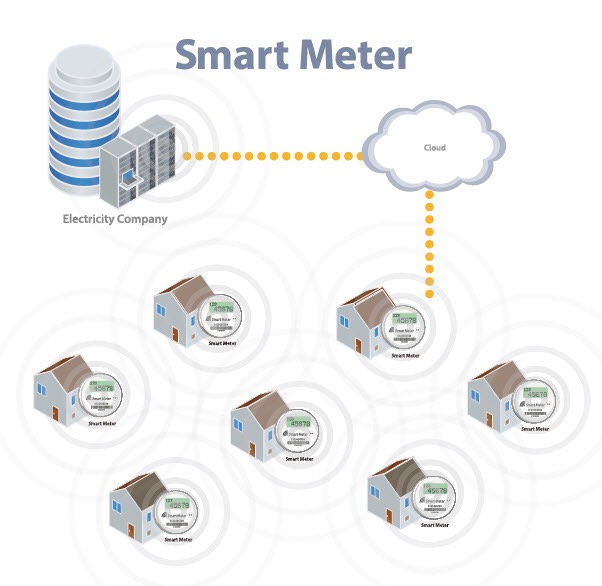Purpose: Traditional electromechanical meters are rapidly being replaced by utilities with electronic smart meters to lay the foundation for the United States’ smart grid energy infrastructure. Some areas of the United States have already begun installing a so-called 'smart grid,' where utility meters transmit data on your household energy usage wirelessly to the utility. Eventually, they want to expand this to installing smart meters on each household appliance within your home, to individually transmit the usage data to the smart meter.
If this technological advancement is allowed to spread across the nation, public health may plummet across the board.
Frequency: A wireless smart meter sends radiofrequency microwave radiation through two antennas, typically in the same frequency range (900 MHz to 2.4 GHz) as cell towers. Unlike cell towers that are now located further from residential buildings, a smart meter located in an outside wall of an occupied home of office space will effectively transmit at a much closer range – increasing the exposure risks!
For the smart meters to communicate with the grid, each meter has a network radio that sends radio frequency signals to other meters and the grid -- generating an invisible “mesh” of chaotic radio frequencies.
Issues: The health risks of layering additional EMF and wireless technology radiation in homes is being essentially ignored in rolling out smart meter installations. Compounded exposure will include your new appliances (stoves, washing machines, microwaves, dishwashers, heating and cooling equipment, refrigerators, televisions, computers, small kitchen appliances etc.) with integrated transmitters.
Appliances will send transmissions wirelessly to smart meters that in turn will transmit very low frequency signals with energy use information every few hours. In order for appliances to send your energy demand information to the utility provider (and if desired your own cell phone or computer), your home’s smart meter will receive appliance device signals and then transmit its own signal to aggregated networks that finally link to the internet and grid.
The exposure for people living in multiple meter pole office or multi-unit housing is another unstudied area – not to mention the impact of proximity to utility collector meters that are designed to transmit RF signals from 500 to as many as 5,000 homes. For many communities, the level of layered “mesh” driven exposure will be truly unprecedented and virtually inescapable for most people (let alone animals and natural systems).
Since the transmitters will soon be integrated into most new devices, shutting off the communication is not going to be a viable or easy option for consumers.
Health Concerns:
According to Dr. Mercola’s website, they've already seen a direct correlation between increasing health complaints in neighborhoods where smart meters have been installed. An excellent interview on the radio frequency these new energy strategies will bring into your home can be found at on ElectromagneticHealth.org. It features Blake Levitt, author of Electromagnetic Fields and a long-time science writer on this topic, and Duncan Campbell, Esq, a visionary thinker on the future of utilities and new energy technologies.
"Usually, the first issue that people start talking about is inability to sleep, or mood swings, along with headaches,” Mercola says.
How can you protect your health if your community forces one on you?
"We've talked to several people in Australia. What they're doing is to put a reflective barrier to keep radiation from your meter from coming into the home," Vickie says. "The problem is you've also got to be aware of your neighbor's meters and where they are located."
This can be a significant challenge if you live in a densely populated area or in a multi-unit dwelling. You'd have to identify all the sources, and address all of them.
However, you may be able to request that your meter be set up to transmit information only once a day, as opposed to once every minute. So if your home is outfitted with a smart meter, talk to your utility company and see if you can change the transmission rate to once every 24 hours, ideally during a time that you're not home. And then tell your neighbors and ask them to do the same.
Better Option: Request that your utility company leave the old meter in place. The utility company may choose to start charging money for an actual person to come and read the meter, which may cost money. Barring that as a possibility, you can cover your smart meter in a faraday cage. Here is one source for those:
Source:
https://www.safespaceprotection.com/emf-health-risks/emf-health-effects/smart-meters/
http://articles.mercola.com/sites/articles/archive/2011/07/09/vickie-warren-on-effects-of-electromagnetic-fields.aspx
